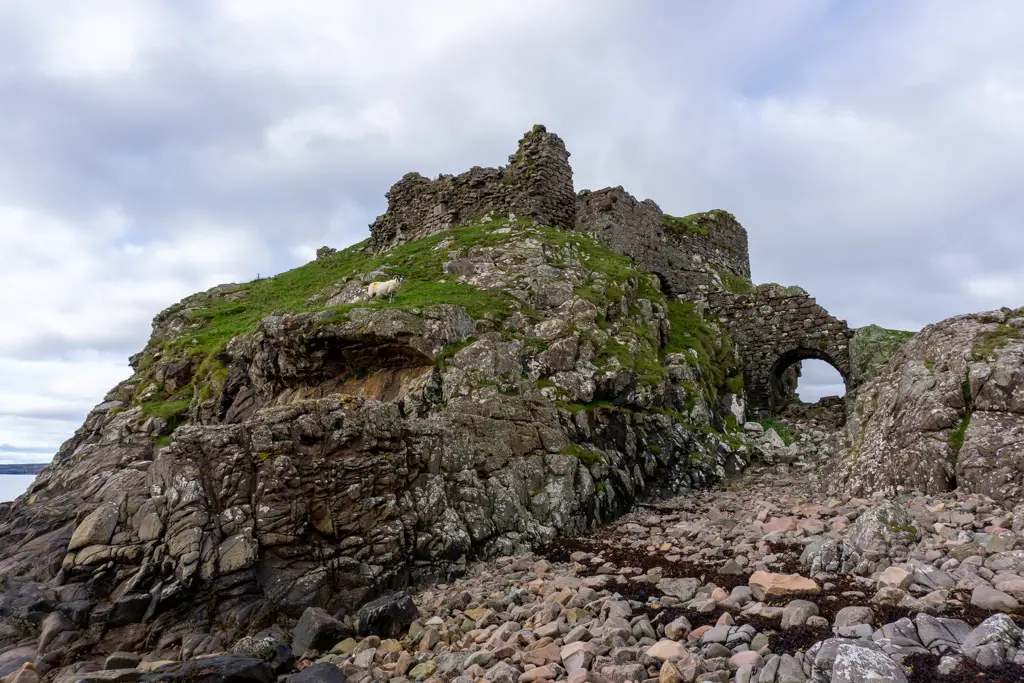Dunscaith Castle (known as Dùn Sgàthaich in Gaelic) is one of the lesser-known castles on the Isle of Skye, yet arguably one of the most beautiful. Whilst only ruins are left of this early fourteenth-century site, many of the castle’s characterising features have survived, including a couple of arched walls and the remains of a drawbridge. Although you are unlikely to see Dunscaith Castle mentioned in any Isle of Skye guidebooks, this off-the-beaten-track attraction is well worth the visit.
This post contains affiliate links. If you use them, I will receive a small commission at no extra cost to you.
Read more: (opens in new tab)
The Legend Behind Dunscaith Castle
Perhaps one of the things that the Isle of Skye is most well known for is its magical folklore. And for lovers of legends, Dunscaith doesn’t disappoint.
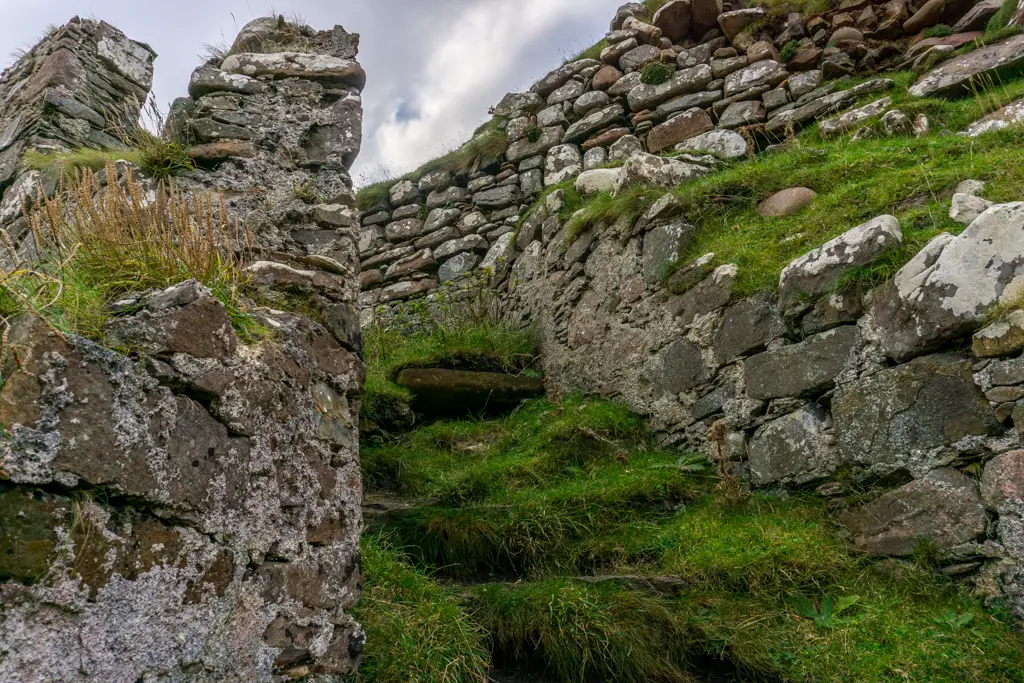
In Gaelic, Dùn means castle or fortress. Sgàthaich comes from the mighty warrior maiden, (also spelt as Scáthach) who was once believed to have lived at Dunscaith Castle. The castle was known as the ‘Fortress of Shadows’ too because Scáthach means shadow in Gaelic.
As well as being her home, Dunscaith Castle was the place where she trained her students in the art of combat. According to legend, she would only train those warriors who were already brave and skilled enough to penetrate the defences of her castle.
If you’ve already heard about the enchanted waters which flow under Sligachan Bridge, you are likely to have already heard of Scáthach’s most famous student, Cú Chulainn, legendary Ulster warrior. He trained with Scáthach for a long time and really made his mark, so much so that it is believed that the mighty Cuillin Mountains are named after him.
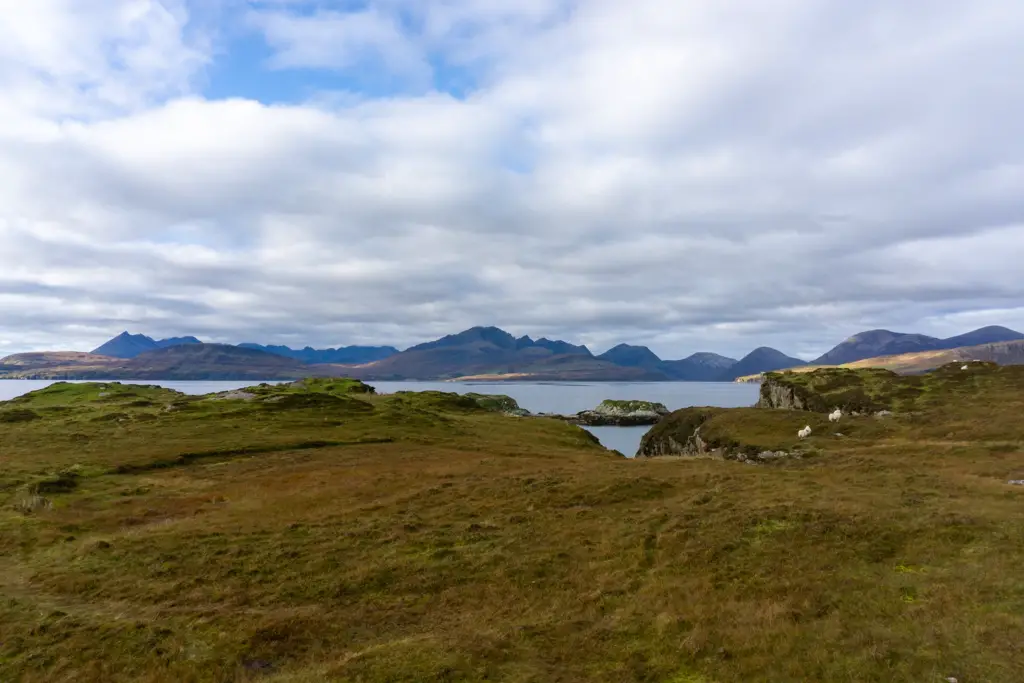
During Cú Chulainn’s training, a battle broke out between Scáthach and her twin sister, Aífe. Rather than get her students involved in the fray, Scáthach wanted to protect Cú Chulainn but knew he would never stay out of the battle. She decided to give him a sleeping potion that would bind him to a dreamless sleep for 24 hours.
However, something went wrong and after just an hour he appeared on the battlefield to defend his master. Aífe had challenged Scáthach to a duel but before she could agree, Cú Chulainn took matters into his own hands and stood as her champion.
Aífe and Cú Chulainn fought fiercely and at one point, it appeared that he had lost. His weapon had been shattered, rendering it useless in battle. Determined not to be beaten, he distracted Princess Aífe by shouting that her horses, the creatures she loved more than anything else in this world, had fallen from a cliff. Alarmed, Aífe turned to look and Cú Chulainn overpowered her. He held his splintered sword to her throat as she begged for her life.
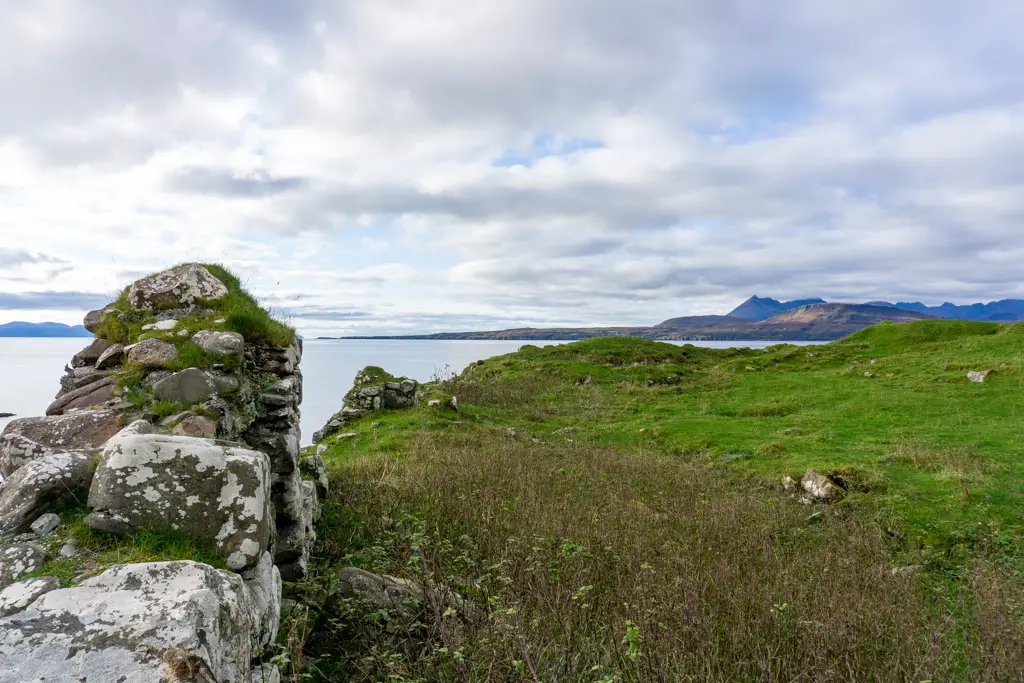
Cú Chulainn agreed to spare her but on two conditions. The first was that she must cease fighting with Scáthach and the second was that she must bear him a son. She agreed on both counts and Aífe went on to give birth to a healthy baby boy, naming him Conlai.
When was Dunscaith Castle Built?
Nobody knows the exact year that Dunscaith Castle was built. If you believe the legends, there has been some kind of fortress here for a very long time. In fact, a twelfth-century manuscript claims that the castle was built by a witch in just one night.
Hidden Scotland claims that Dunscaith Castle was either built or rebuilt in 1181, by King William. What we do know is that the current ruins are likely to date somewhere from the early fourteenth century.
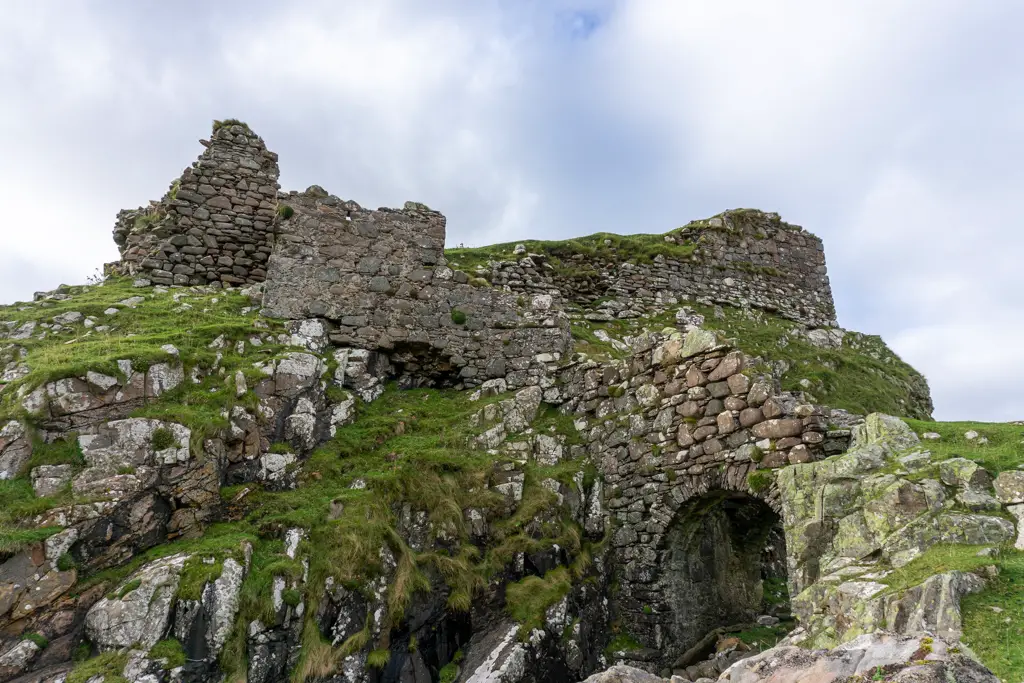
Dunscaith Castle History
The jury is out on which clan originally held Dunscaith Castle, with many claiming it was the MacDonalds and others saying it belonged to the MacLeods of Dunvegan. What we know for sure, is that the castle certainly changed hands between the two clans many times throughout the years. In the fifteenth century, it was taken back from the MacLeods and became the principal seat of the MacDonalds of Skye.
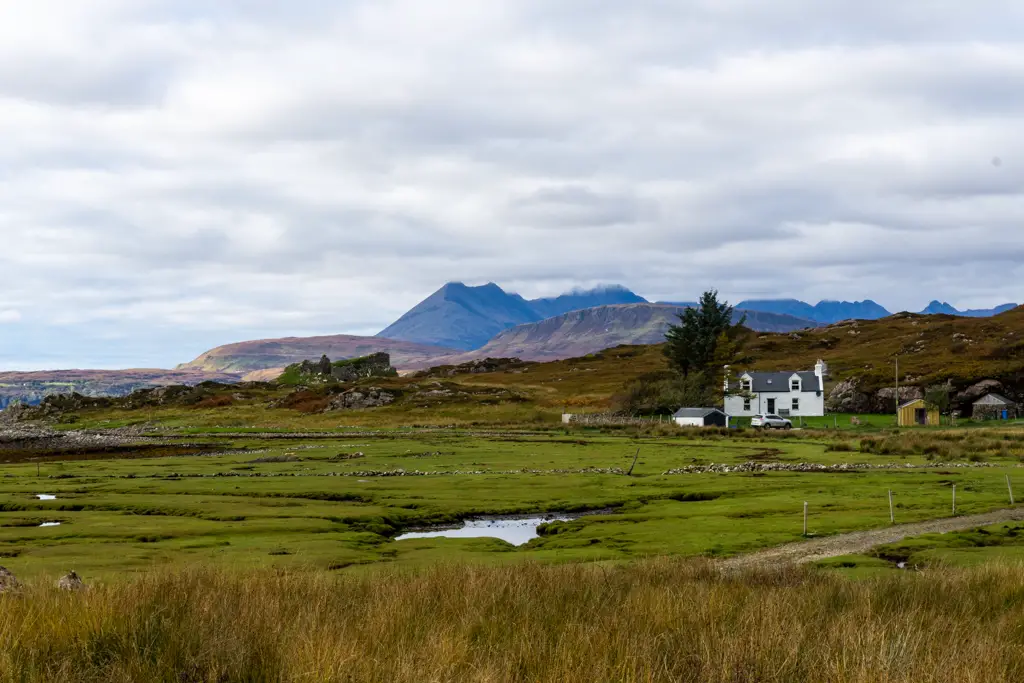
The power and influence of the MacDonalds eventually drew the attention of King James IV, who decided to bring the Lordship under the Scottish crown. The King and his men attacked both Knock Castle (also located in Sleat) and Dunscaith Castle. The battle which took place in 1431 was successful and the power of the MacDonald lords was crushed.
The King held both castles for a short time until the rebellion was over. They were then returned to those from which they were seized. Dunscaith Castle was held again by the MacDonalds until 1618, when Sir Donald, (8th Chief and 1st Baronet of Sleat) was presented with a royal charter for lands in Trotternish, in the north of the island. In exchange for these vast new swathes of land, Sir Donald had to agree to move the main MacDonald seat to Duntulm Castle (located on the Trotternish Loop), leaving Dunscaith to fall into disrepair.
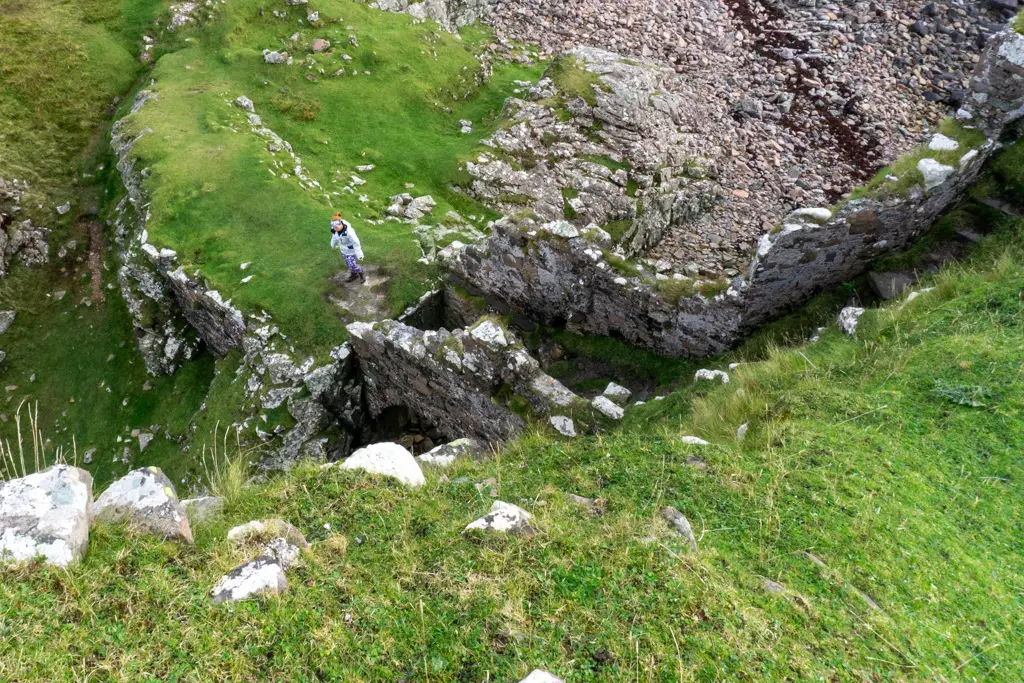
The ruins of Dunscaith are now protected as a scheduled monument, however, compared to other historical locations on Skye, it has been left largely neglected.
Features of Dunscaith Castle
The castle is located on a large rock on the shoreline (about 40 feet high) which sits on Loch Eishort. In its day, the castle would have been an imposing fortress, with a great vantage point over to the Black Cuillins. There are drops in excess of 10 metres on each side, further cementing its natural defences.
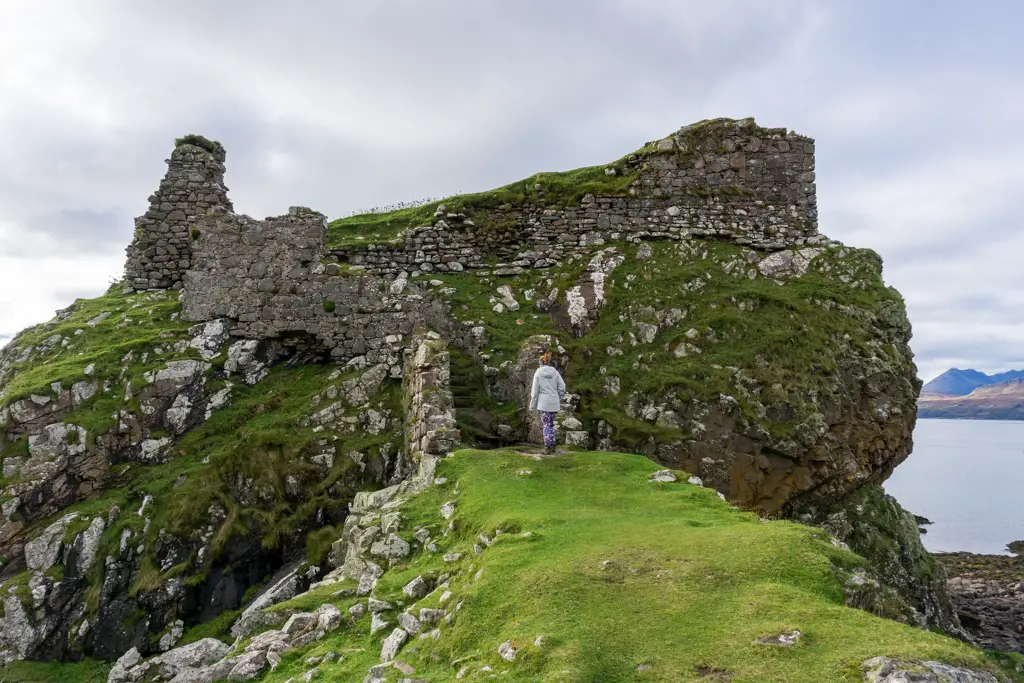
Although little of the castle still remains, it is possible to see the upper stairs to the castle, as well as some of the inner arched walls. The castle rock is joined to the mainland by an arched stone bridge, which would have led to a wooden drawbridge. In the side walls of the castle entrance, it is still possible to see the pivot holes for the drawbridge.
Where the drawbridge once was, is now just an empty gap with a considerable drop. However, it is possible to cross the empty space if you are both brave and careful! Personally, I didn’t fancy it, (nor did I fit the criteria)…
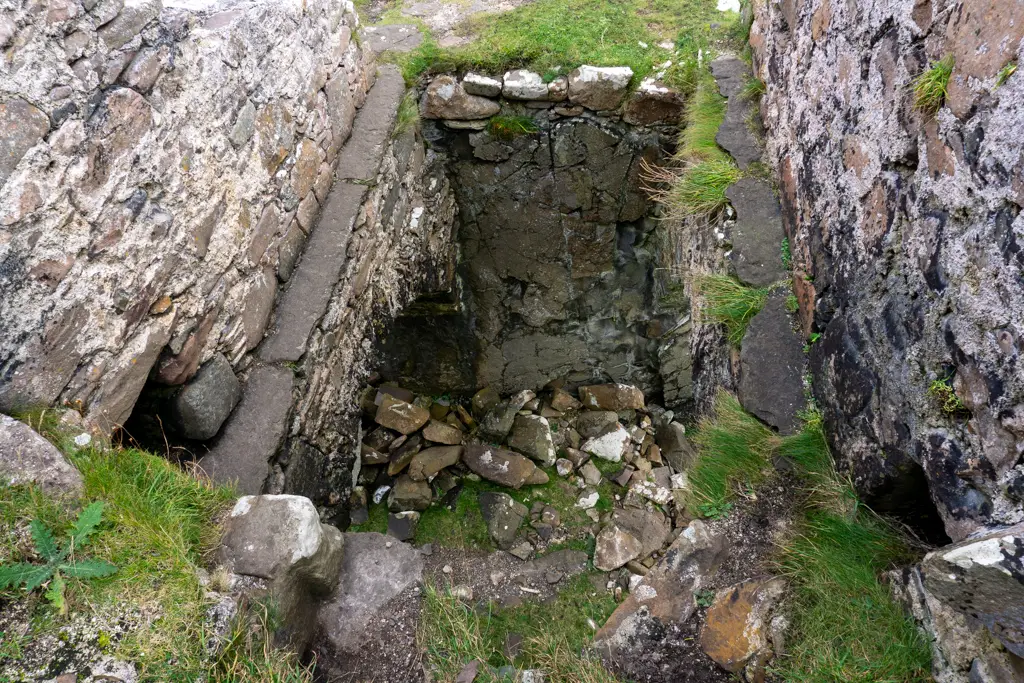
If you don’t want to edge your way along the bridge remains, it is also possible to scramble up the sides of the rock and into the castle. However, be aware that many sheep frequent this area and poop everywhere!
Some parts of the castle curtain wall still stand and inside the castle courtyard, there is a well. However, most of the internal walls and buildings have gone, with the except of the overgrown foundations. From the top of the castle, you can see the tiny island of Eilean Ruairidh offshore, where there is the remains of another ancient fortress.
The Hike to Dunscaith Castle
In my opinion, the walk to and around Dunscaith Castle is one of the Isle of Skye’s best hikes. It is short, easy and not too boggy but on a clear day the views are incredible and you are unlikely to share the place with many others. The out and back hike is just 2 km.
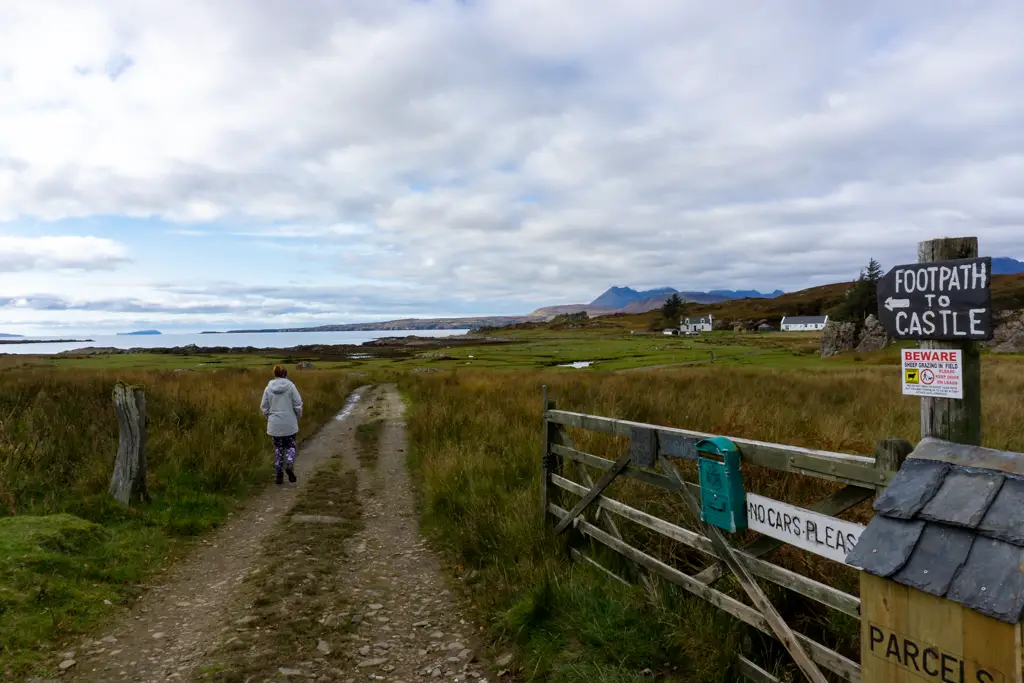
Begin the hike from the signed driveway, close to the cattlegrid. Head down the drive and pass to the left of the two houses. Walk towards the shore, when you will see Dunscaith Castle. From here, you can take whichever route you’d prefer to explore. I recommend heading up the surrounding hills last as you get the best views of the castle from here.
Getting to Dunscaith Castle
Dunscaith Castle is located on the Sleat peninsula, to the south of the Isle of Skye. If you are already based in Portree, you will need to head in the direction of the town of Broadford to get there. Once you have passed Broadford, take the turning off the A851 and follow the signs to Tokavaig. Be aware that the roads leading up to the castle are narrow single track roads. I wouldn’t recommended making the journey in ice or snow! You will also struggle getting access driving down these roads if you are travelling in a camper van.
There is very limited parking close to the cattle grid. Please do not obstruct traffic by parking in passing places. The walking trail up to Dunscaith Castle begins at the head of a driveway. Simply head along the track and in the direction of the ruins.
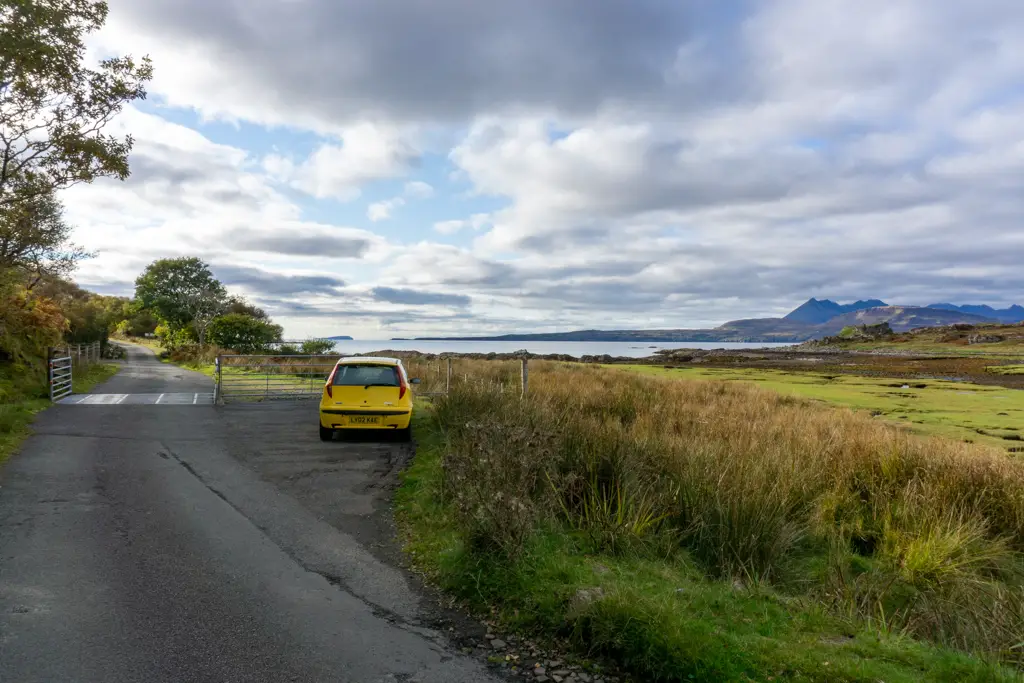
Places to Stay Nearby
The best areas close to the castle in which to stay are Tarkskavaig, Tokavaig, Ord and Achnacloich. I’ve listed a few accommodation options which come highly rated below.
This beautiful holiday home comes highly recommended for couples who are looking for their own space. Located in Tarskavaig, it is a peaceful part of the island, very close to Dunscaith Castle. There are two bedrooms, fully equipped kitchen and bathroom.
Offering arguably the best views of Dunscaith Castle that you can find, Thorsvik is a holiday home located in Teangue. It directly overlooks the castle and has a beautiful balcony outside for enjoying those warm summer evenings. There are 3 bedrooms, 2 bathrooms, kitchen and a spacious living area.
Situated in Tokavaig, this beautiful spot will make you feel like you are the only people on Skye. The views from the garden are out of this world! There are 2 bedrooms in the property, as well as 1 bathroom and a fully equipped kitchen. This cosy choice is most known for its attentive hosts, who will make sure you have a trip you don’t forget!
Have you visited Dunscaith Castle yet?

